Sarees are traditional Indian attire that fascinates people all over the world. Change is constant in the fashion industry with every new trend, making an impact on people. However, there is one attire that has stuck around through ages and continues to do so; Saree. Saree; an attire that is timeless and truly reflects women’s elegance.
With different varieties of sarees across India, there are various ways draping the garment, making each style unique and distinguished. While there are these multiple traditional ways of draping a saree, there are a few modern ways with a little twist to give new avatar to the old classic trends.
Here is a walk through different states showing different styles of draping saree:
Athpourey from Bengal

The style that is most evident and visible form of draping a saree would be the Bengali style. The Bengali style of draping a saree unlike modern style has the pleats in the front with the pallu comes from behind to the front. Traditionally the Bengali women tied the keys of the house to the pallu over their right shoulder as head of the house.
Nauvari saree from Maharashtra

The nine-yard long saree talks volumes about the powerful, confident ladies of Maharashtra. This way of draping the saree le is defined by its unique pattern, which requires it being worn like a dhoti around the legs and the upper portion is draped like a regular saree. Lavani folk dancers demonstrate one of the best examples of the Nauvari saree. It permits smooth movement of the legs accentuating every move of the wearer elegantly.
Nivi drape from Andhra Pradesh

The globally recognized way of wearing a saree is a derivative of Andhra Pradesh style; Nivi Drape. The aristocracy mostly wore this style. Accentuating women’s curves this dropping the women look incredibly majestic and royal.
Kappulu from Andhra Pradesh
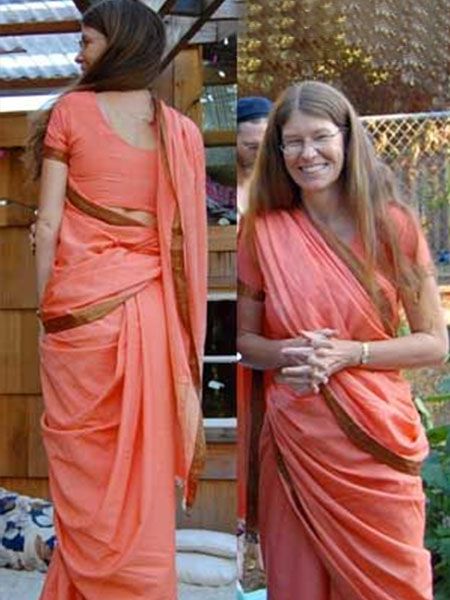
The Kappulu draping style has two outstanding features. One, the narrow pleats at the back which flatter the form and second, two falls that are formed by twisting the free end pieces around the body. The older women of the cast Kappulu wear the Saare differently as it is draped from right to left, unlike other sarees. The pallu of saree is thrown over right shoulder and hung loose.
Mekhela chador from Assam

The handloom saree of Assam is worn by delicate beauties of Assam. The attire is divided into two main pieces. Bottom of the saree is worn as a sarong with pleats in front. The upper cloth is tucked on the left side of the waist in a triangle while the other end is taken like a shawl, freely over the shoulder.
Surguja from Chhattisgarh
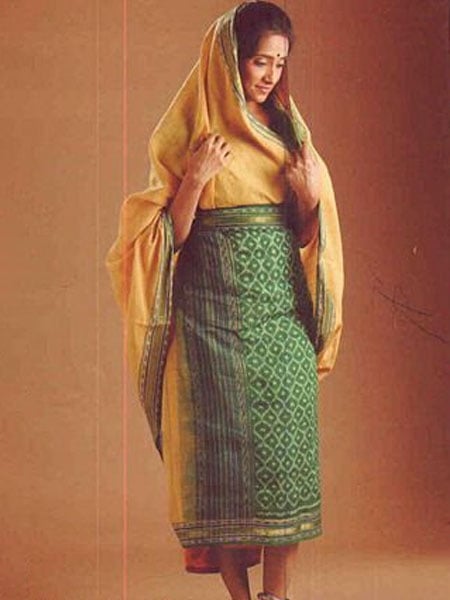
This elegant draping style is worn by the dancers of the Oraon community of Chattisgarh. A 5.3-yard saree is used to design a marvelous whirling effect at the end. The free ends are tucked in the back and the front which gives the dancers freedom to move around.
Seedha pallu from Gujarat, UP, and Odisha

This saree drape looks like a lehenga choli as the pallu is used as the dupatta is everyday worn in Gujarat, Uttar Pradesh, and Odisha. This style permits freedom of mobility and works well for heavy sarees as the shoulder doesn’t have to hold heavy work of pallu. The pallu of the Saree is in front where the saree border is demonstrated perfectly.
Pinkosu from Madurai
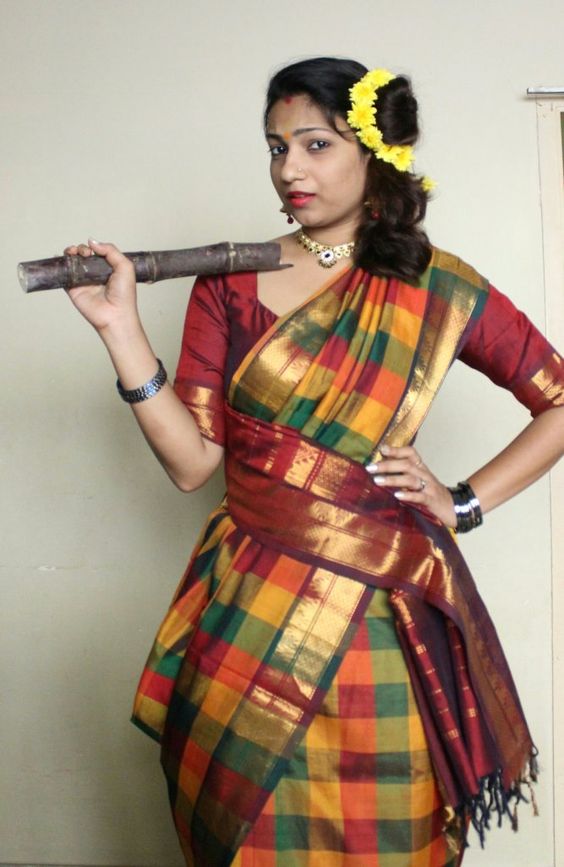
Pinkosu means “Pleats on the back.” Women in Tamil Nadu wear this incredibly gorgeous style. This saree is perfect for hot weather and can be worn without a petticoat. For more coverage, the Saree is wrapped one and half a times around the body. The pleats of the saree will fall towards the outside of the wrap contrary to Nivi style and thereby showing the underside of the saree. The sarees that work the best according to the style is Homespun handloom cotton because they are reversible.
Bootheyara from Karnataka
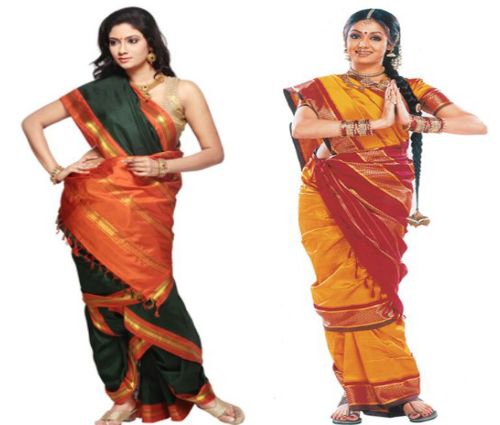
From the nomadic origin, the Ceremonial performers are related to this style. The saree measures 8-yard can be used as two-piece drape which requires another garment to cover the bust, or one-piece pant style drape, whichever suits the lady. The cotton-silk blend or cotton saree is the finest sarees of this style.
Coorgi style from Karnataka
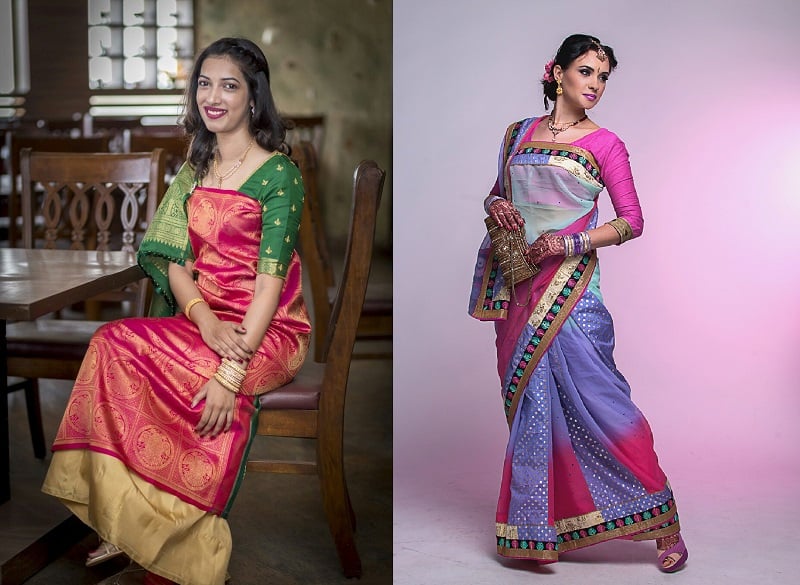
Popular as it was mentioned in stories of Kaveri and Agastya, the Coorgi style of draping was emerged to help Coorgi women. Since the Coorgi women lead an energetic life that involved climbing hilly slopes and trees every day, it was important that these tasks were accomplished without hustle. Traditionally the attire comprises of a blouse with full-sleeves and a saree that has pleats at the back. The free end is brought below left shoulder and secured over the right shoulder but tying in a knot called ‘molakattu.’ Most brides wear the Kanjeevaram red-gold silk saree Coorgi style during the ceremony.
Halakki Vokkaliga from Karnataka

One of the most distinguished is the way the womenfolk wrap their saree, existing at the base of western ghats of Karnataka. One might have heard, aboriginals of Karnataka as they are popularly called. These women tie the saree around the neck and then drape it around their body like a sarong. With no necessity of petticoat or blouse, the women accessorize the attire with flowers and colorful beads.
Gol sari or Parsi drape
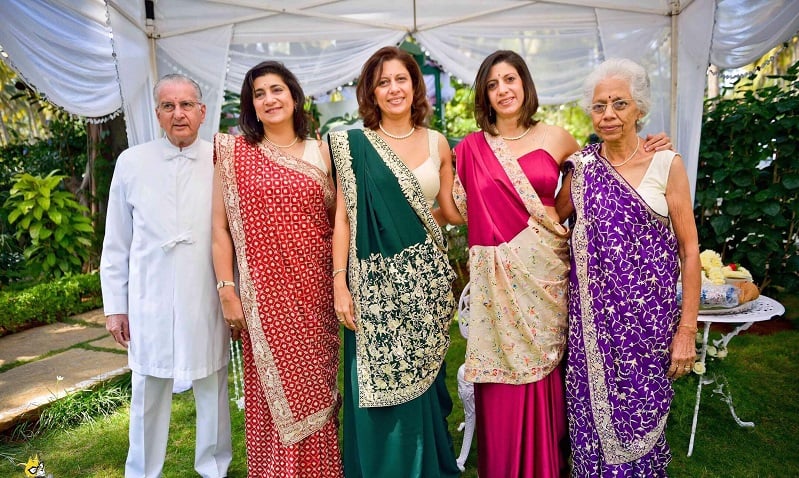
Have you seen the intriguing style of drape Parsi women wear at their festivals or regular basis? Well, this elegant style is worn by the Parsi women post the Saree Perawana ceremony, from where they begin wearing saree. The Pallu or Gara is draped over the blouse after taking it from behind. The pallu is hung over lose over the left shoulder, then is brought to the right shoulder to splayed the folds in front.
Kunbi drape from Goa
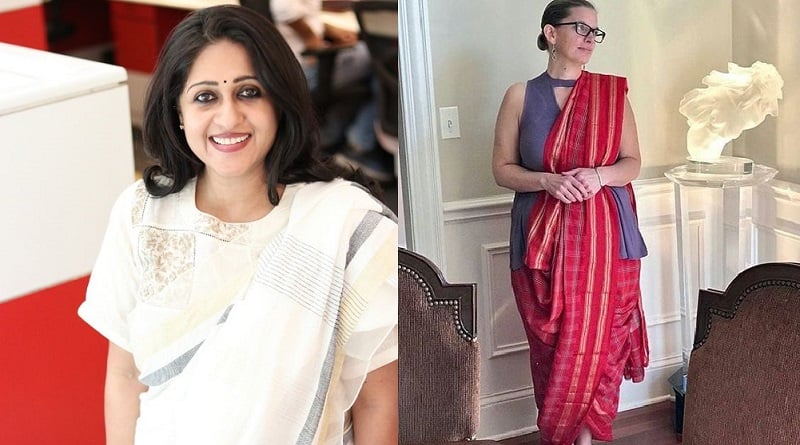
The Kunbi is the ancient style of draping which the tribal women of Goa follow. Kunbi is older than the 16th century and the origin of the Portuguese. This style is basic draping with knotting it over the right shoulder. The saree is tied above the ankle, which gives freedom to women to work in fields.
Dhangad from Goa

Understanding Goa women need to work with Sea a lot; the saree is knee-high and stylish to protect the garment from getting wet.
Madisaru from Tamil Nadu

An essential part of the Iyengar culture and the Iyer of Tamil Nadu, Madisaru was traditionally worn by women after being married. However, with traditions changing with time, the saree is worn for any main occasion. This style of draping is one of the most difficult to wrap and doesn’t require a petticoat or a blouse if appropriately tied. Following the ardhanareeshwara draping style, which means half woman and half man. According to the style, the lower half of the saree is draped like a dhoti and the upper half like a traditional saree with pleats.
Namboothiri from Kerala

The Namboothiri is an ancient remnant of a saree worn in Kerala used to cover only the lower part of the body. The mundum neriyathum combination of the mundum, or the lower garment and the neriyathum or the upper garment. Latter of the Saree is tucked inside the blouse or thrown over the left shoulder. In modern parlance, this form of saree is rarely worn and is worn by the folk dances during festivals like Onam.
Mohiniattam from Kerala

This style of Saree is primarily worn by Golla or shepherd and agriculturalist of Narasannapalle. It is a village in the Kadapa district of Andhra Pradesh. The drape begins as normal Nivi Saree’s, but once the pleats are done, they are tucked at the waist after twisted around the body. Then the creases are rolled outwards and secured by wrapping them over with the innermost layers. Then the lower borders are picked at the two extremes and brought to the waist at the back from either side to tuck in. These types of Sarees are mostly draped with Silk so that the shape can be held for a longer duration.
Santhal drape from Jharkhand
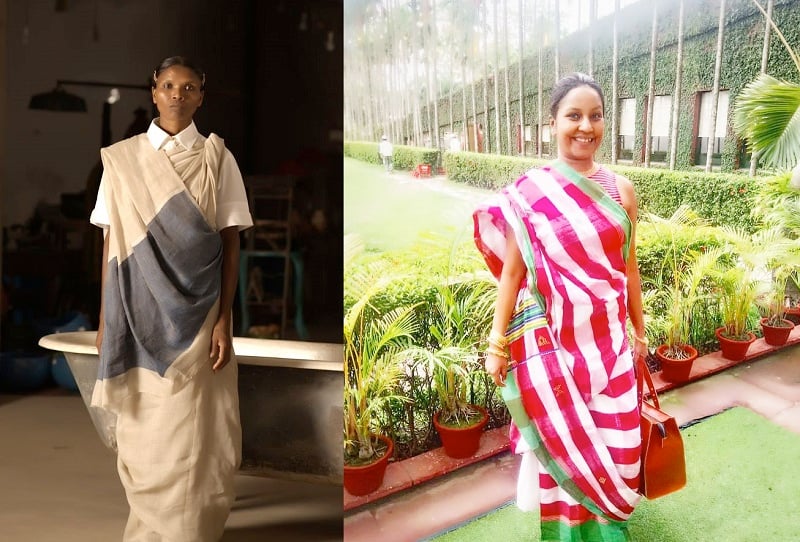
Similar to Bengali style, it has box pleats in the front with pallu pulled over the left shoulder in the big triangle. Their chequered pattern characterizes traditional Santhal sarees. This drape style is effortless and free like the Santhali people.
Innaphi and Phanek from Manipur

The women of Manipur traditionally wear innaphi and Phanek. With two types of Phanek; the tribal phanek and the meitei phanek, they are worn as ethnic Sarong. Innaphi means a cover for the upper body, while the phanek is horizontally striped. The Phanek also has floral borders which are common creators of the tribe and act as a trademark. The innaphi is worn as a dupatta with floral designs that are elegant to look at.
Purnia from Bihar

Women in the provincial area of Bihar prefer to drape their saree in purnia style. It is a conventional way of wearing a saree; it supports them to cover their heads as well.
Rajasthani style
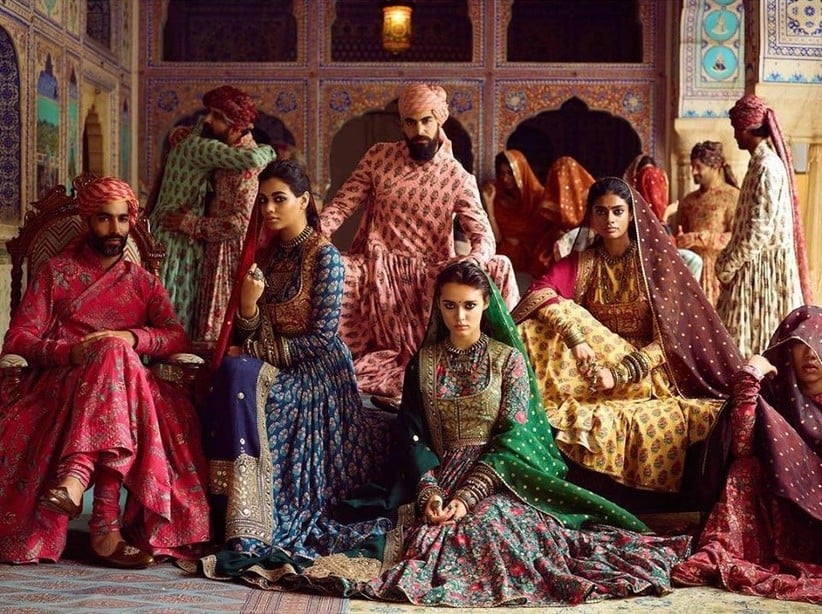
Similar to the Gujarati way of draping the Rajasthani Style is still different, with one small change. The free end of the pallu is pinned back of the blouse by the women making the whole look more energetic.
Where there are traditional ways of draping a Saree here are a few with little twists or modern ways of wearing a Saree:
Belted saree draping
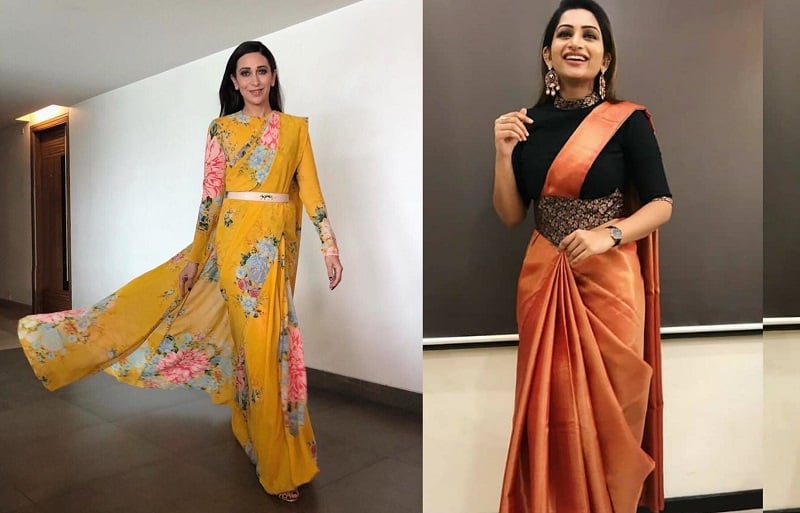
Belted saree appears new, but is an ancient style where sarees were complemented with an accessory called Kamar Patta- the gold accessory like a belt which used be wrapped around the waist and was famous in the ’60s and the ’70s. In the modern version of the trend, the saree is paired with leather, metal or other fancy belts over simple draped Navi saree.
One pallu open drape

This style started like a nivi style of draping, but the other end of the end, the pallu is kept free without pleating on the other shoulder. Many women in the country wear this form of draping for various occasions.
Pant style saree

The upcoming or youth of India created the revamping saree style. In this style, the saree is carried with leggings or pants instead of petticoat with a choice of pleats tucked into the pants mid-waist while the other end can be taken forward and tucked with various drape pallu style. This style of saree is prevalent in the metro cities of India.
Retro Style Saree Draping

Want a perfect retro look? Mumtaz is your solution. Popular as Mumtaz style saree as she emphasized it in the Indian film Industry. This wrap-around style saree with a small border is draped in 3 layers up form without any pleats to give a close look by accentuating the figure. Sleeveless blouse with round neck and a high top bun will give a perfect retro look.
Neck Drape Saree Draping

It is a funky twist given to the saree by wrapping pallu around the neck like a scarf. Paired with off the shoulder or full-sleeved boat neck blouse, the saree gives the best look. The soft textured garment will fit the best as scarfs.
Jacket over Saree Draping

Is your Saree too plain? Top it with a jacket! Sporting a jacket with saree has been a revolutionary hit. Pair the saree with a traditional or contemporary jacket instead of a blouse. One can work around with different neck and collar types, textures, and embellishments as well.
Mermaid Style Saree Draping

Irrespective of the body shape, the Saree has made a mark in the market. The close-fitted hip section and flared out bottom gives the saree a skirt look with pallu followed from waist to shoulder.
Inverted Border Drape Style Saree

A variant of Nivi Saree draping, the pleats should be tucked towards the left of the waist. Twirling the border facing down and wrapping around the hip meanwhile tucking it at the back waist. Hung the pallu over the shoulder and secured with a pin.
Oriya Style Saree Draping

After following the basic procedure of draping for the lower body and pinning the pleated pallu on the left shoulder, take a corner of the pallu to bring it to the front under your right arm and then pin it.
Lehenga Style Saree Draping

The Saree is a look-alike of a lehenga. After one round, the small pleats are tucked around the waist, and the pallu is thrown over the shoulder.
Rajrani Style Saree Draping

Similar to Gujarati style draping, the corner of pallu that is tucked behind the Gujarati style. It is pinned on the free shoulder to create a V-shaped fall over the bust.
Butterfly Style Saree Draping

Same nivi style draping with a change in pallu. The pallu is pleated extremely thin to show off the flat midriff.
Indo-Western Style Saree Draping
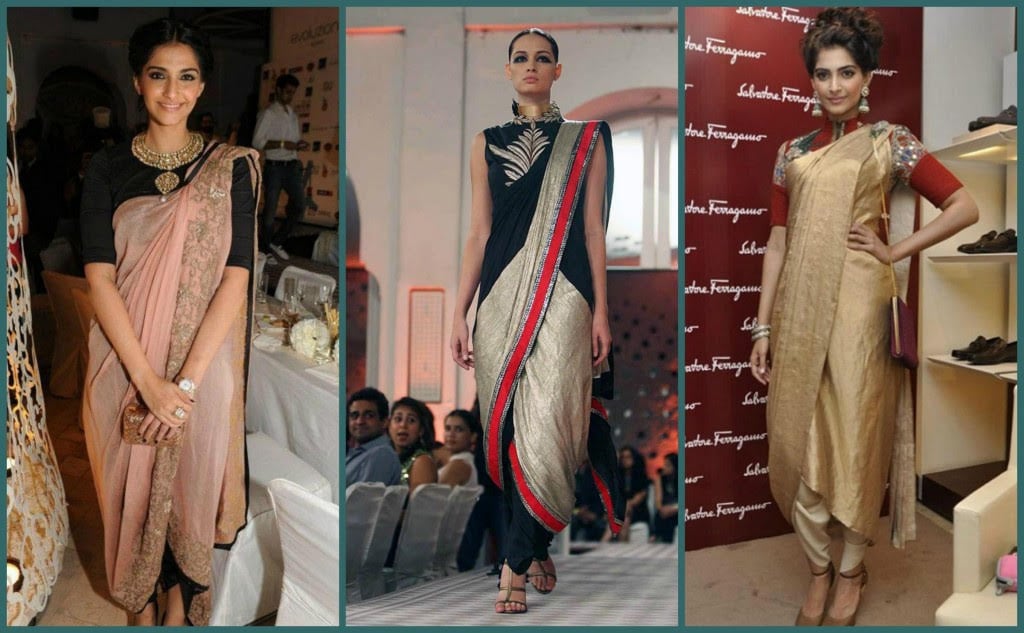
Designers keep experimenting on sarees with various styles and embellishments. They add western tinge to the ethnic drape creating a fusion; Indo-western saree, which is why it doesn’t have a fixed silhouette. For example, gown look-alike cocktail saree or an offbeat bloused teamed with simple saree to get a distinctive look.
Skirt Style Saree Draping

Saree can also be worn like a skirt by making small pleats or wide box pleats around the waist. Drape the pallu over the shoulder with very sleek pleats.
Short Patli Style Saree Draping

Similar to the nivi and butterfly saree, the pallu is finely pleated and embellished with luxe detailing giving a sleek and edgy look.
Half Float and Half Tucked Style Saree Draping

The basic draping style with pallu pinned with one pleat and remaining is allowed to fall through the shoulder, giving it a casual look.
Tee or Tunic Style Saree Draping

The Navi style of draping used with the pleats tucked in the waistline, paired with a t-shirt or a tunic instead of a blouse. The pallu is draped loosely over the shoulder.
Sarees have been a part of Indian culture since the beginning and still continues to be so. Even though the way women wrap the saree might be different, but attire is always elegant in all cultures and parts.




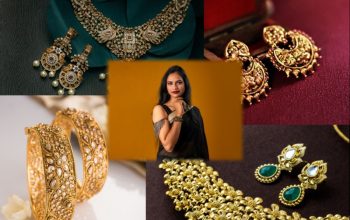
3 thoughts on “Saree draping style in different cultures/states in India”